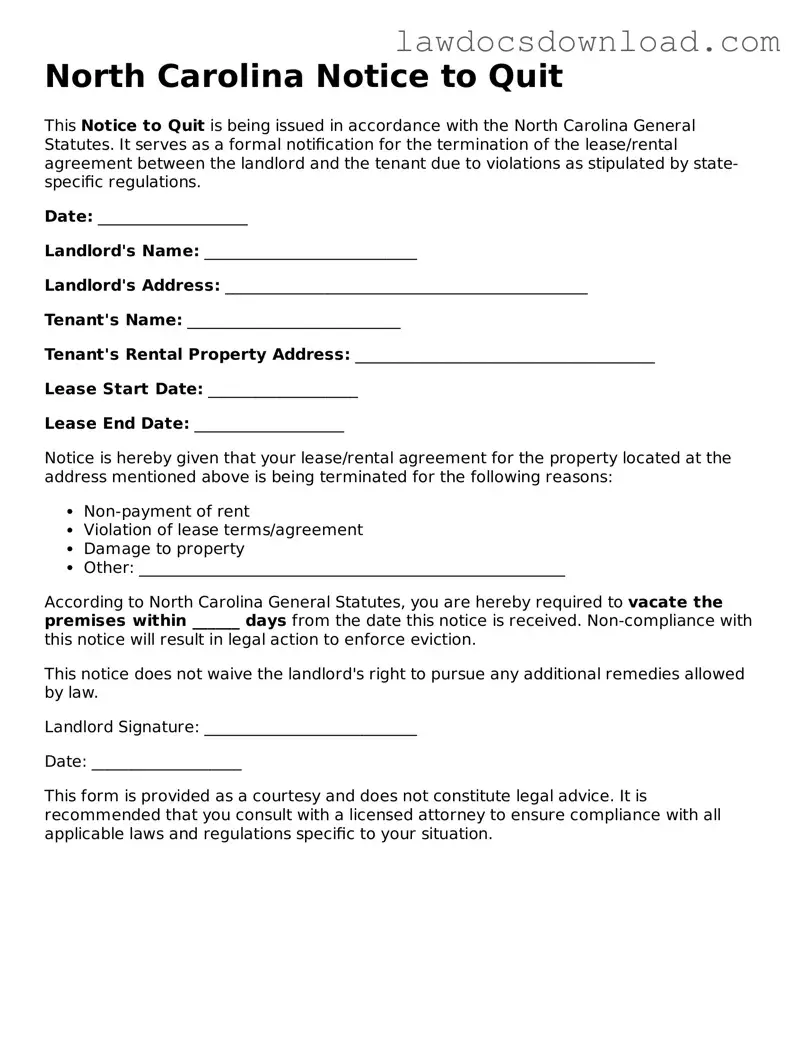North Carolina Notice to Quit
This Notice to Quit is being issued in accordance with the North Carolina General Statutes. It serves as a formal notification for the termination of the lease/rental agreement between the landlord and the tenant due to violations as stipulated by state-specific regulations.
Date: ___________________
Landlord's Name: ___________________________
Landlord's Address: ______________________________________________
Tenant's Name: ___________________________
Tenant's Rental Property Address: ______________________________________
Lease Start Date: ___________________
Lease End Date: ___________________
Notice is hereby given that your lease/rental agreement for the property located at the address mentioned above is being terminated for the following reasons:
- Non-payment of rent
- Violation of lease terms/agreement
- Damage to property
- Other: ______________________________________________________
According to North Carolina General Statutes, you are hereby required to vacate the premises within ______ days from the date this notice is received. Non-compliance with this notice will result in legal action to enforce eviction.
This notice does not waive the landlord's right to pursue any additional remedies allowed by law.
Landlord Signature: ___________________________
Date: ___________________
This form is provided as a courtesy and does not constitute legal advice. It is recommended that you consult with a licensed attorney to ensure compliance with all applicable laws and regulations specific to your situation.
